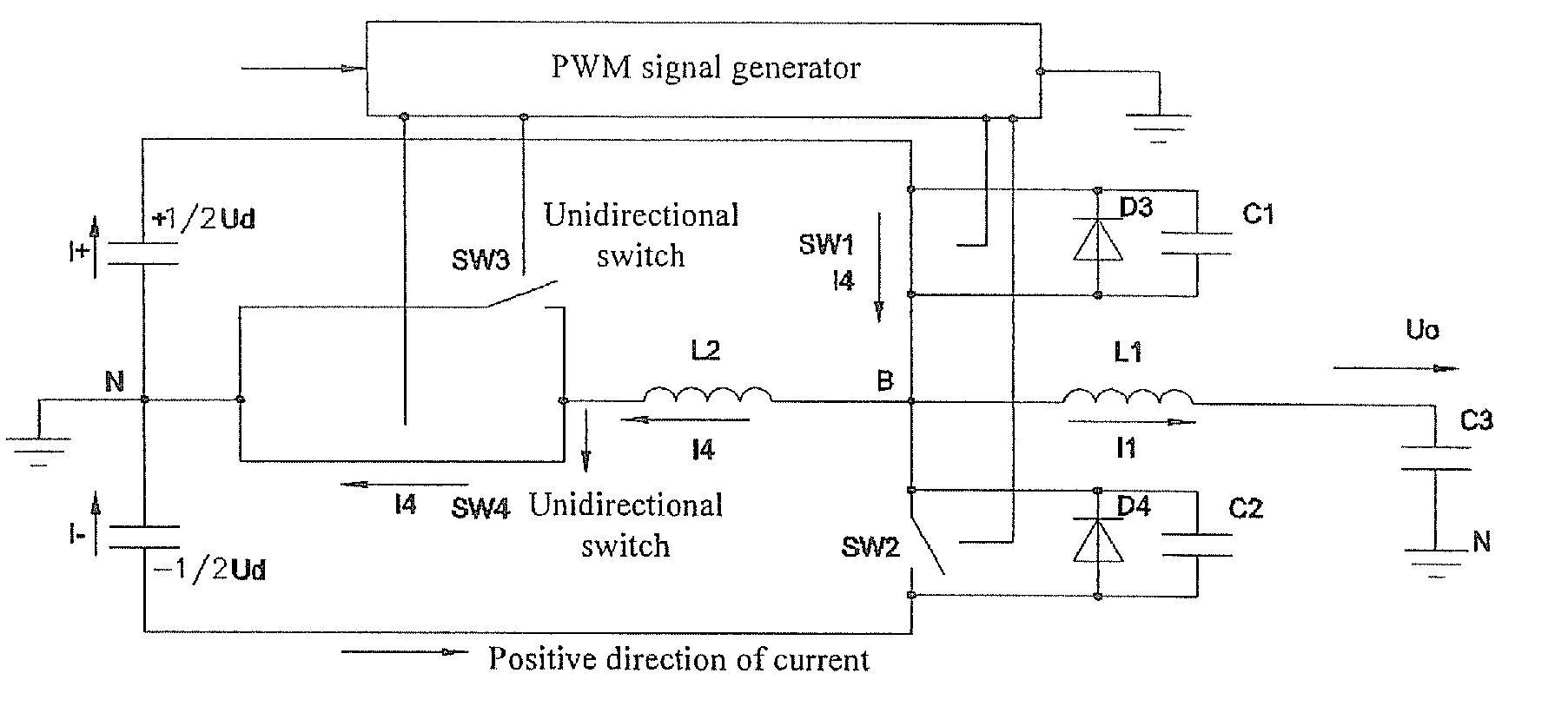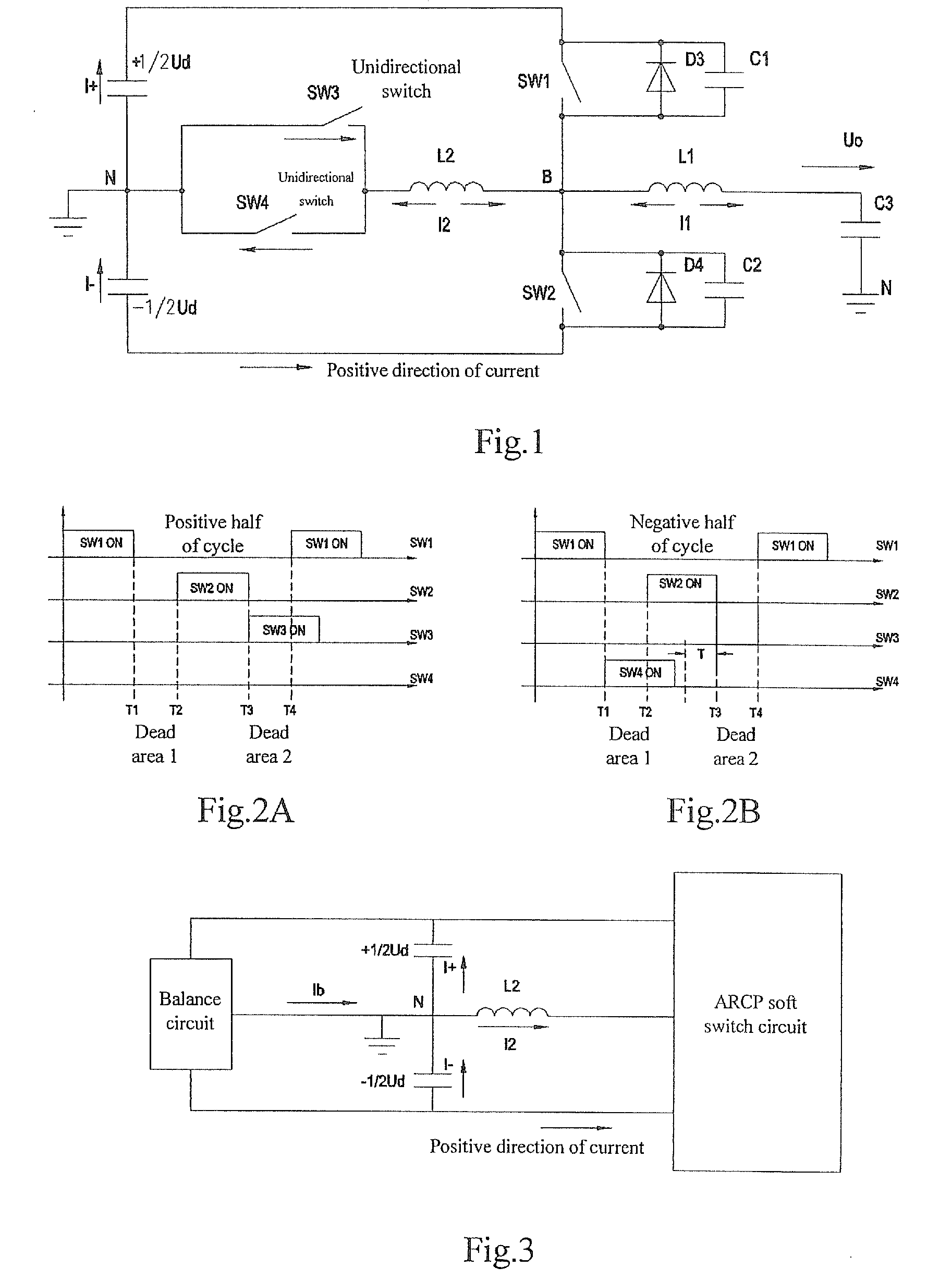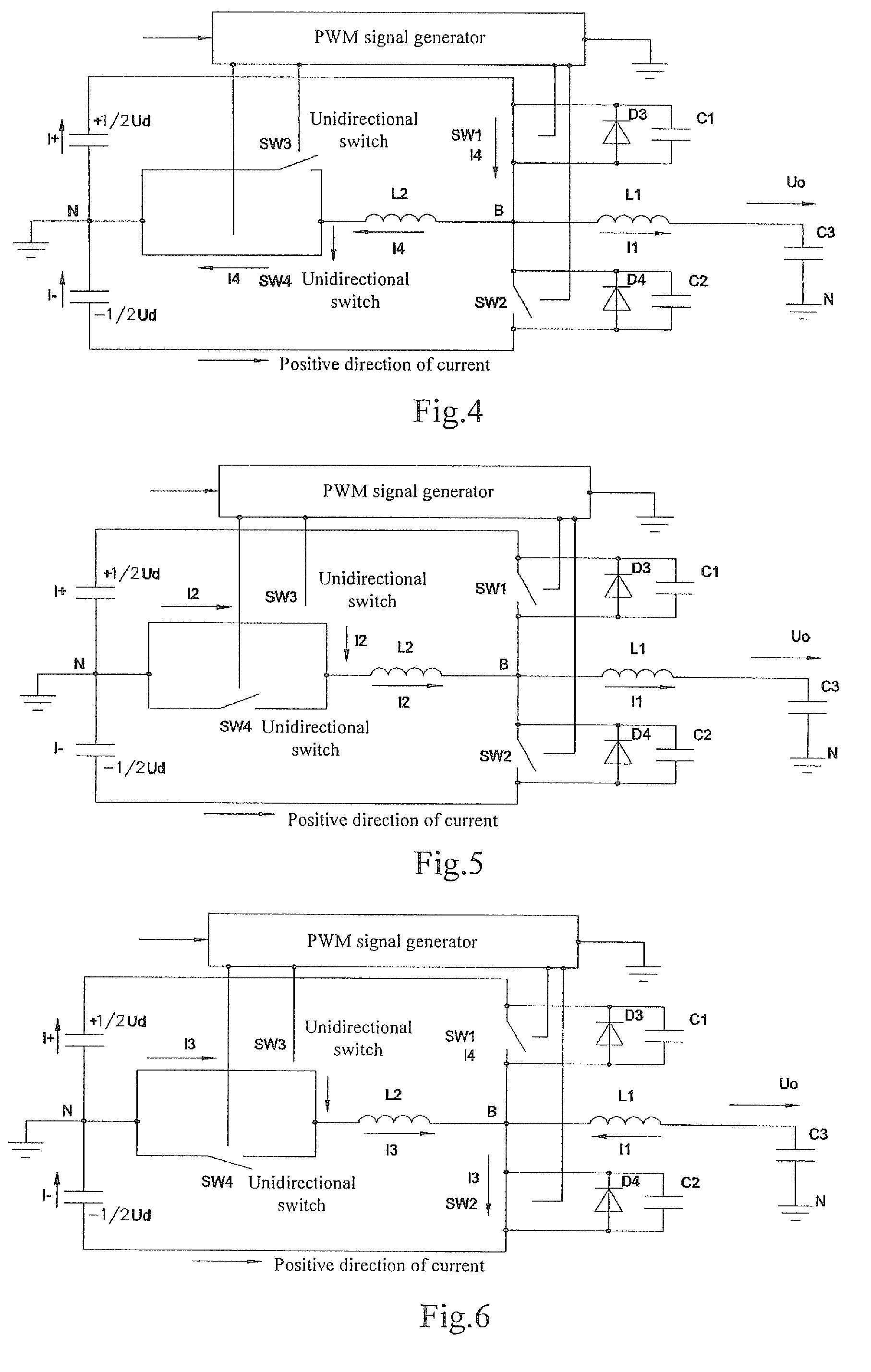Control method for soft switch circuit in switch power source
a control method and power supply technology, applied in the field of switch power supply, can solve the problems of inability to meet the output voltage, device inoperative or damaged, index, etc., and achieve the effect of reducing the overall volume of the circuit, improving the efficiency of the circuit, and simplifying the circui
- Summary
- Abstract
- Description
- Claims
- Application Information
AI Technical Summary
Benefits of technology
Problems solved by technology
Method used
Image
Examples
first embodiment
The First Embodiment
[0036]FIG. 4 illustrates a schematic diagram of a circuit operation status corresponding to a moment when the forward auxiliary switching device SW4 is closed in the positive half of a cycle of a soft switch circuit according to the embodiment of the invention, FIG. 5 illustrates a schematic diagram of a circuit operation status corresponding to a moment when the backward auxiliary switching device SW3 is closed in the positive half of a cycle of the soft switch circuit according to the embodiment of the invention, FIG. 6 illustrates a schematic diagram of a circuit operation status corresponding to a moment the backward auxiliary switching device SW3 is closed in the negative half of a cycle of the soft switch circuit according to the embodiment of the invention, and FIG. 7 illustrates a schematic diagram of a circuit operation status corresponding to a moment the forward auxiliary switching device SW4 is closed in the negative half of a cycle of the soft switch...
second embodiment
The Second Embodiment
[0041]A timing control for the switching devices is performed as in the schematic diagrams of switch logics illustrated in FIG. 9A and FIG. 9B. That is, under the control logic of the ARCP soft switch circuit, SW4 is closed after SW1 is closed, and opened during a period of first dead area [T1˜T2] in the positive half of a cycle to thereby generate the balance current I4 with the same magnitude as and in the opposite direction to the subsequently generated resonant current I2; and SW3 is closed after SW2 is closed, and opened during a period of second dead area [T3˜T4] in the negative half of a cycle to thereby generate the balance current I3 with the same magnitude as and in the opposite direction to the subsequently generated resonant current I2.
third embodiment
The Third Embodiment
[0042]A timing control for the switching devices is performed as in the schematic diagrams of switching logics illustrated in FIG. 10A and FIG. 10B. That is, under the control logic of the ARCD soft switch circuit, SW4 is closed after SW1 is closed, and opened prior to the moment T1 when SW1 is opened in the positive half of a cycle to thereby generate the balance current I4 with the same magnitude as and in the opposite direction to the subsequently generated resonant current I2; and SW3 is closed after SW2 is closed, and opened prior to the moment T3 when SW2 is opened in the negative half of a cycle to thereby generate the balance current I3 with the same magnitude as and in the opposite direction to the subsequently generated resonant current I2.
[0043]In the context of the invention, the two unidirectional auxiliary switching devices are defined as forward and backward auxiliary switching devices respectively to distinguish between their uni-directivity of co...
PUM
 Login to View More
Login to View More Abstract
Description
Claims
Application Information
 Login to View More
Login to View More - R&D
- Intellectual Property
- Life Sciences
- Materials
- Tech Scout
- Unparalleled Data Quality
- Higher Quality Content
- 60% Fewer Hallucinations
Browse by: Latest US Patents, China's latest patents, Technical Efficacy Thesaurus, Application Domain, Technology Topic, Popular Technical Reports.
© 2025 PatSnap. All rights reserved.Legal|Privacy policy|Modern Slavery Act Transparency Statement|Sitemap|About US| Contact US: help@patsnap.com



